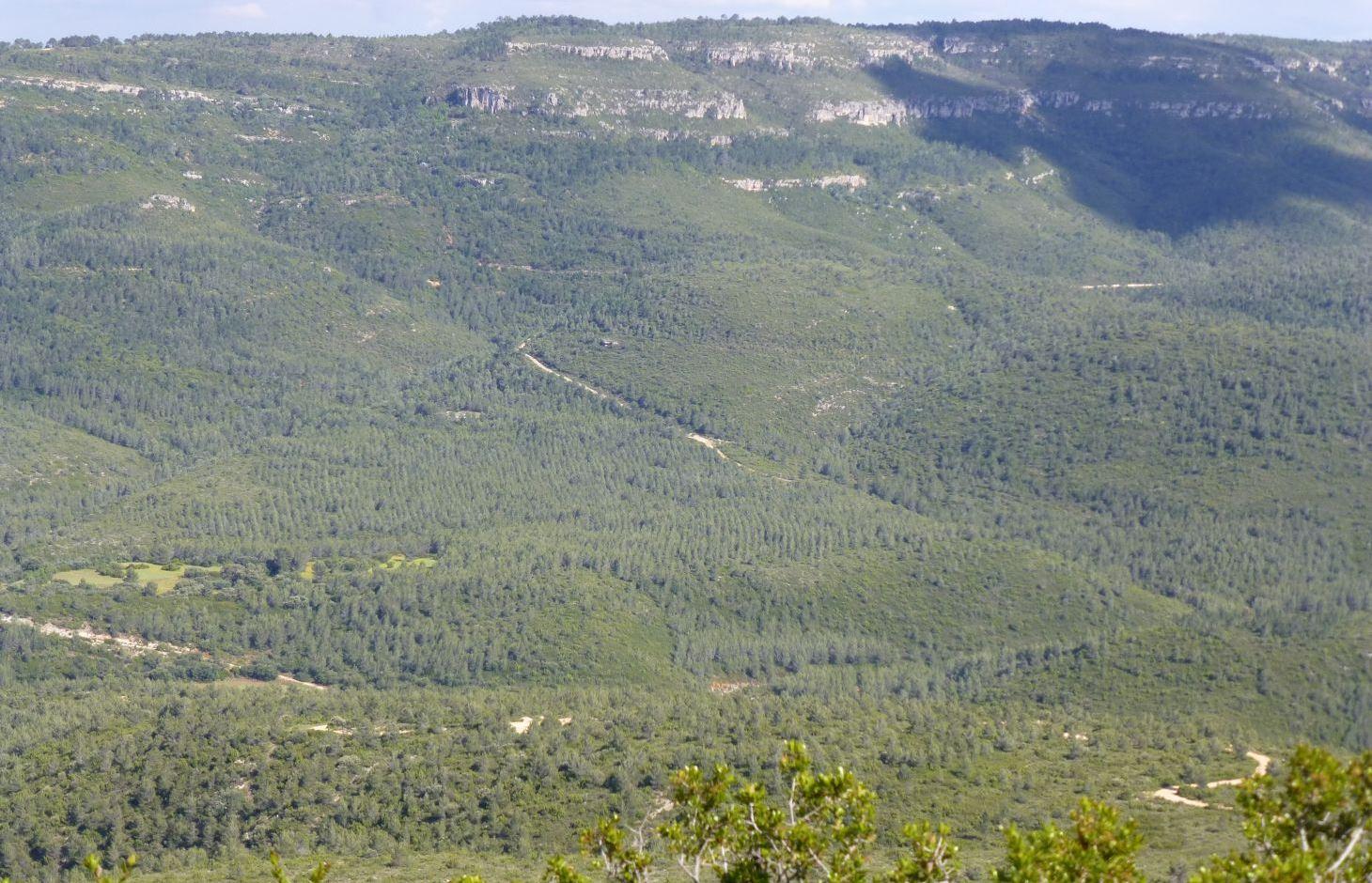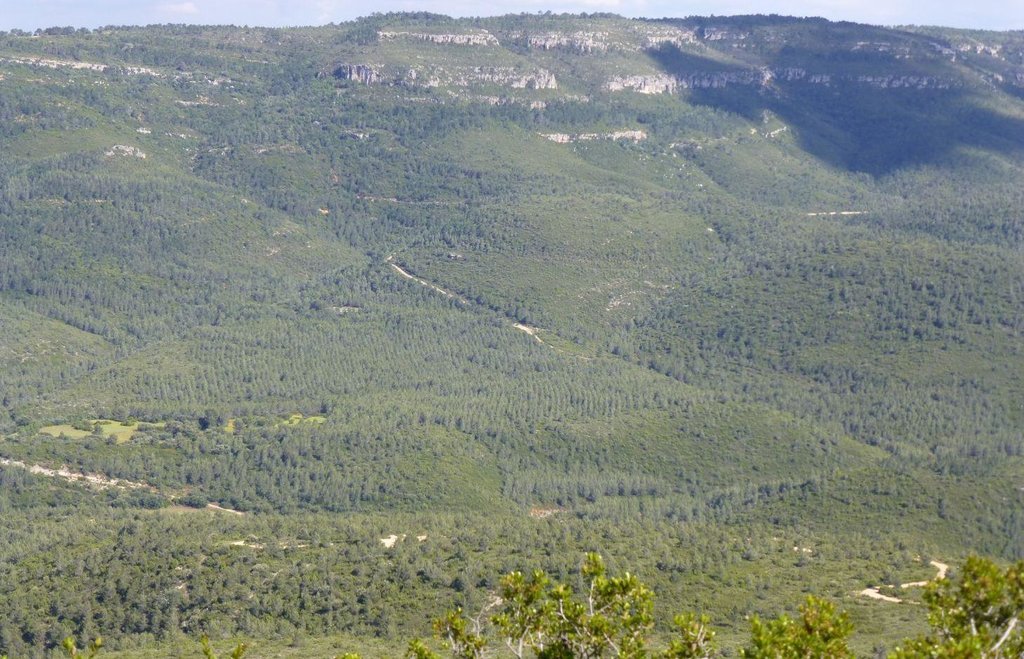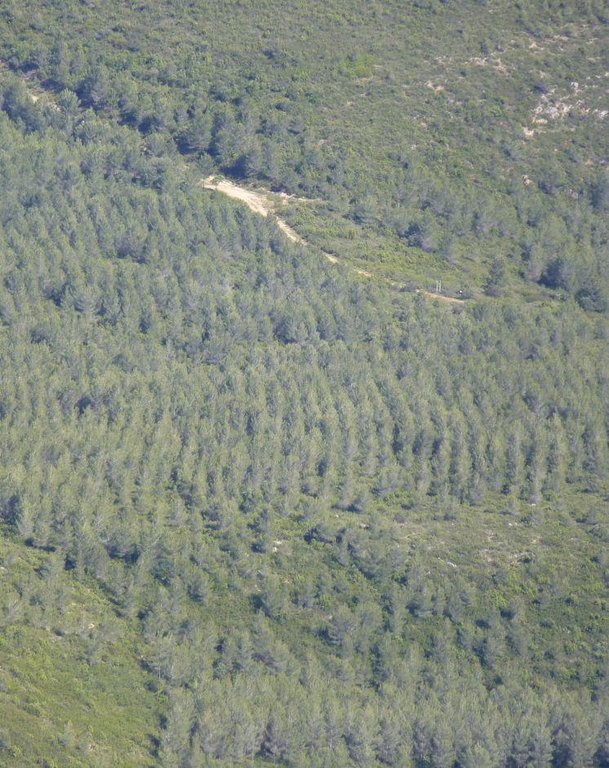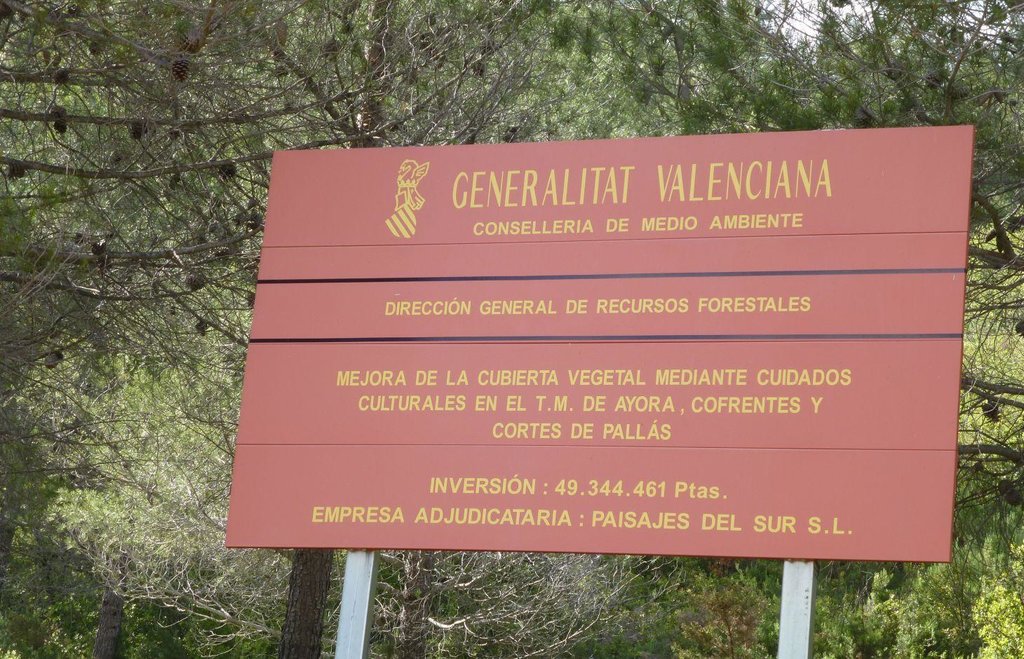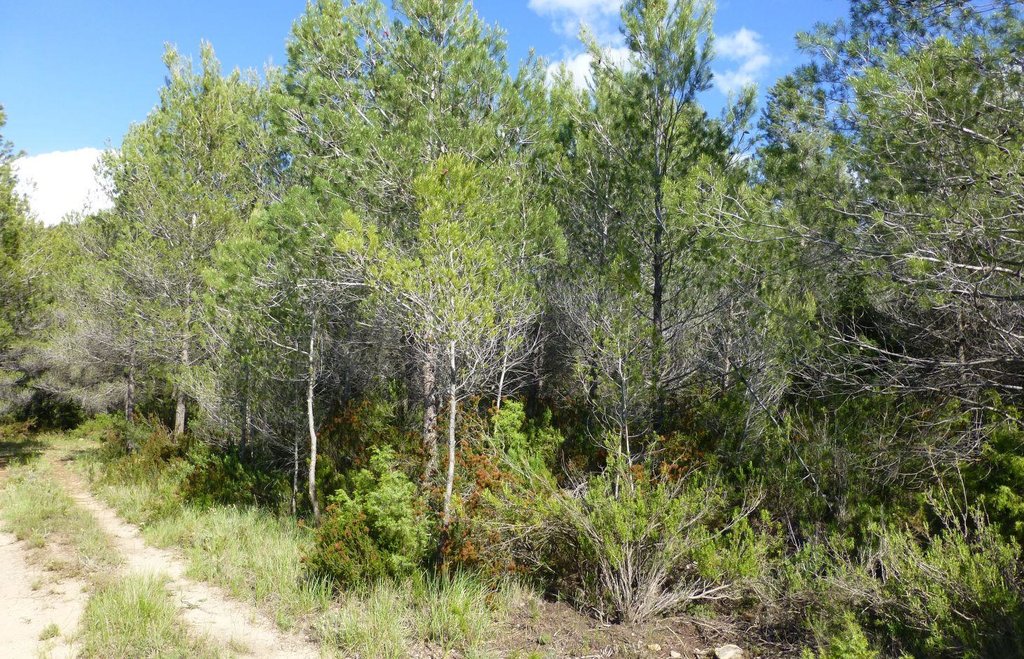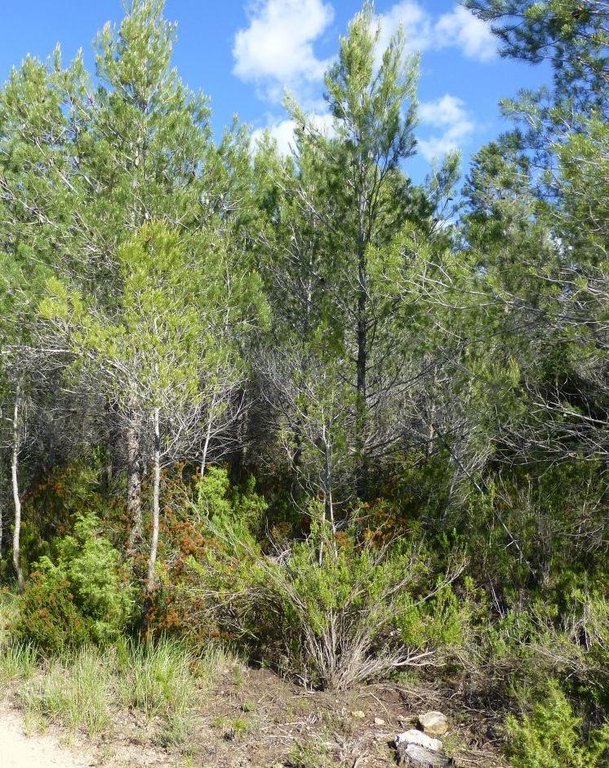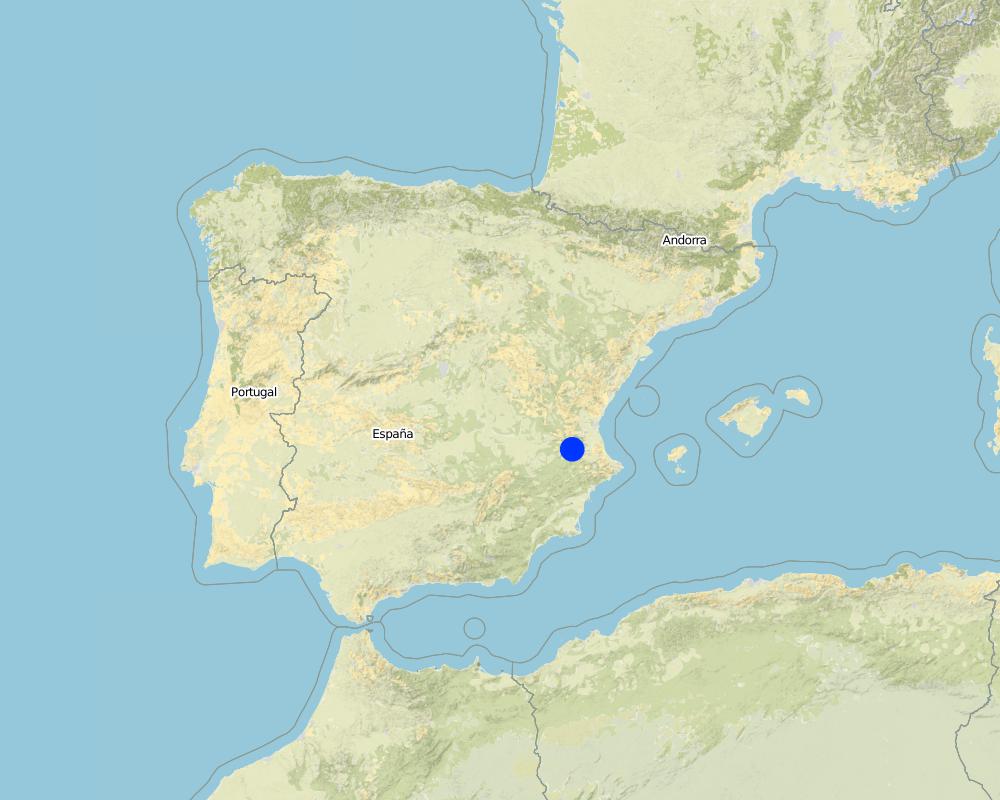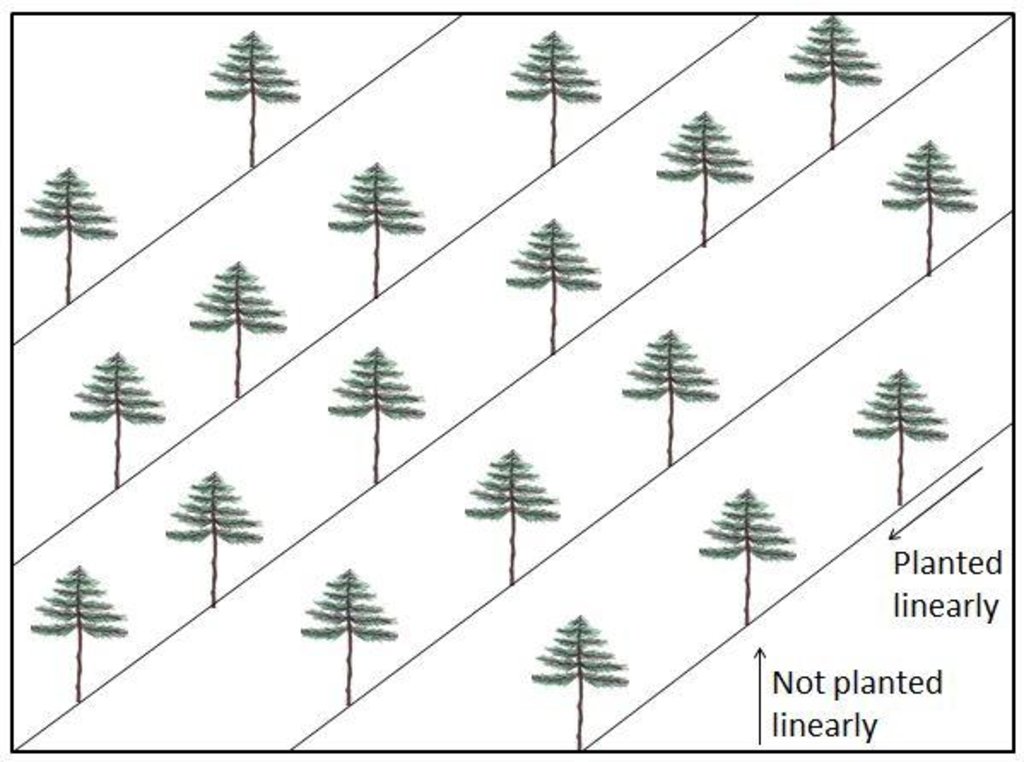Afforestation with Pinus Halepensis after the fire of 1979 (La Molinera) [Испания]
- Создание:
- Обновить:
- Составитель: Nina Lauterburg
- Редактор: –
- Рецензенты: Deborah Niggli, Alexandra Gavilano
Repoblación “La Molinera” con Pino Halepensis después del incendio del año 1979 (Spanish)
technologies_1584 - Испания
- Полная аннотация в формате PDF
- Полная аннотация в формате PDF для вывода на печать
- Полная аннотация в формате интернет-страницы
- Полная аннотация (неотформатированно)
- Afforestation with Pinus Halepensis after the fire of 1979 (La Molinera): 3 января 2017 г. (inactive)
- Afforestation with Pinus Halepensis after the fire of 1979 (La Molinera): 1 августа 2019 г. (inactive)
- Afforestation with Pinus Halepensis after the fire of 1979 (La Molinera): 1 декабря 2021 г. (public)
Просмотреть разделы
Развернуть все Свернуть все1. Общая информация
1.2 Контактные данные специалистов и организаций, участвующих в описании и оценке Технологии
Специалист по УЗП:
Valdecantos Alejandro
Fundación Centro de Estudios Ambientales del Mediterráneo (CEAM)
Испания
Специалист по УЗП:
Colomer Vicente
Forest Agent Generalitat Valenciana (Conselleria de infraestructura, territorio y medio ambiente)
Испания
Название проекта, содействовавшего документированию/оценке Технологии (если применимо)
Catastrophic shifts in drylands (EU-CASCADE)Название организации (-ий), содействовавших документированию/оценке Технологии (если применимо)
Centro de Estudios Ambientales del Mediterraneo (CEAM) - Испания1.3 Условия, регламентирующие использование данных, собранных ВОКАТ
Составитель и ответственный(-ые) специалист(-ы) согласны с условиями, регламентирующими использование собранных ВОКАТ данных:
Да
1.4 Декларация по устойчивости описываемой Технологии
Вызывает ли описанная здесь Технология проблемы деградации земель настолько, что ее нельзя назвать природосберегающей?
Нет
2. Описание Технологии УЗП
2.1 Краткое описание Технологии
Определение Технологии:
Post-fire afforestation with Pinus Halepensis to reduce soil erosion and to enhance forest growth.
2.2 Подробное описание Технологии
Описание:
As a consequence of the devastating fire of the year 1979 which destroyed 33’000 ha of forest, strong erosion processes occurred on the bare soil and hindered the vegetation to regrow. Furthermore, this region was already abandoned (rural exodus) and missing management practices increased the problem of erosion. Therefore the government mandated to afforest the burnt areas in 1985.
The main purpose of the afforestation was to reduce the soil erosion (which was severe at that time) by planting trees, which increases soil stability and enables forest growth again. But the state also wanted to ensure wood extraction in the future. Furthermore, the visual impact was an important driver for afforesting this area.
The afforestation was executed in the winter of 1985 (November-February/March) by the regional forest services (Conselleria de agricultura). Forest engineers, who worked for the state and planned the project, collaborated with forest agents whereas the involved forest agents contracted local villagers to help afforesting these areas. The forest agent acted as a link between engineer and forest brigade and controlled if the brigade executed what the engineer proposed. He also provided assistance to the workers. The forest brigade was paid by day-if it was raining, people did not work and did not get any salary.
Nobody could provide direct information on the afforestation process in 1985 but there are not many differences of how they did it in the past and how it works today. The planting holes (60cm x 60cm x 60cm) were created with a machine (Caterpillar) using a “spoon” to open a hole and cover it again. This process loosens the soil (only possible in soils which are free from big stones). It should be noted that they did not use a ripper, they knew that the soil is destroyed using this technique. The seedlings were planted manually by the forest workers and arranged linearly because this facilitated the handling of the machines. Since the soil had a low stone content, it was suitable for the establishment of a forest.
The afforested area covered around 100 ha (not continuously). Today, the costs of an afforestation are around 1500 Euro per ha, but in the past it was less expensive. They only planted Pinus Halepensis. Today, a seedling of this tree species costs between 20 and 60 Cents. If the regional forest services have their own nurseries, they do not need to spend money to buy seedlings.
The success of an afforestation depends on numerous factors such as aspect and humidity (better on north-facing slopes), soil amount/fertility (better conditions on former cultivated fields), origin of the seedlings (adapted to the local climatic conditions), variability/uncertainty of the weather conditions (e.g. droughts, freezing). Usually a plantation is done in October/November and therefore especially the first summer determines the success. If it is too dry the plant will not grow (roots are too short to reach the humidity deeper in the ground). Further, the availability of trained people and the selection of appropriate machines are crucial.
The documented afforestation is one of a few examples of afforestation trials which succeeded. Today there is a forest where young pines are growing naturally ("children" of the planted ones), but also resprouter species (e.g. Quercus) can be found, which regenerated without having been planted and apparently were dispersed by birds.
But there are also some problems related to this afforestation. The forest agent explained that there is a high pest risk since monoplantations are less resilient to diseases (sick or dead plants in turn increase the fire risk). Another problem is that the trees were planted too densely (800-1000 plants per ha with a spacing of 5-10m) which requires recurrent management of the forest. Knowing about this problem, around the year 2003 they managed the area doing a selective clearing to reduce both the continuity and the competition between the species and thus also reduced the fire risk (“ayuda regeneración”). But the forest has become extremely dense again, thus increasing the risk of fires. There is a need to manage this area again and to extract biomass (selective clearing), but unfortunately no management project is planned for the near future.
The region of Ayora is mountainous with a dry subhumid climate (~380 mm annual rainfall). The risk of fire incidence is at its highest from June to September when there are adverse conditions like drought, high temperatures and strong winds (mainly the winds coming from central Spain, called “poniente”).
The population density is very low and there are only few job opportunities (e.g. marginal agriculture, grazing, hunting, beekeeping). The plantation provided jobs for rural people. Also today forest management could be a source for jobs.
2.3 Фотографии, иллюстрирующие Технологию
2.5 Страна/ регион/ места, где применяется Технология, информация о которых собрана в данной Анкете
Страна:
Испания
Административная единица (Район/Область):
Spain, Valencia
Более точная привязка места:
Ayora, La Molinera
Охарактеризуйте пространственное распространение Технологии :
- равномерно-однородное применение на определенной площади
Если точная область неизвестна, укажите приблизительную площадь:
- 0,1-1 км2
Пояснения:
Boundary points of the Technology area: In the kmz file the whole afforestation of 1985/1986 is shown but it is not clear whether the whole area was afforested successfully. The coordinates indicated above show the location I visited which had success.
Map
×2.6 Сколько лет применяется данная Технология
Если год начала применения Технологии достоверно неизвестен, дайте примерную оценку:
- 10-50 лет назад
2.7 Внедрение Технологии
Укажите, как именно Технология УЗП была внедрена:
- через проекты/ внешнее вмешательство
Пояснения (тип проекта и т.д.):
The project was designed by the regional forest services of Valencia in 1985 (“Conselleria de agricultura” at that time, today it is called “Conselleria de infraestructura, territorio y medio ambiente”).
3. Классификация Технологии УЗП
3.1 Основные цели и задачи реализации Технологии
- снижение или предотвращение деградации земель, восстановление нарушенных земель
- сохранение экосистем
3.2 Текущий(-ие) тип(-ы) землепользования на территории, где применяется Технология

Леса/ лесистая местность
Вид деревьев:
- Виды Сосны
Продукции и услуги:
- Древесина
- Плоды и орехи
- Другие продукты леса
- Природоохранные/ защитные
- Защита от природных катаклизмов
- hunting
Пояснения:
Major land use problems (compiler’s opinion): The past land use resulted in a change of the vegetation composition (e.g. through removal of resprouter species). Due to rural exodus and land abandonment, the natural succession took place and fire-prone early-successional species colonized the abandoned fields. The vegetation grew without any control which seems to have caused the devastating fire of the year 1979 which destroyed 33’000 ha of forest. As a consequence of this fire, strong erosion processes occurred on the bare soil and hindered the vegetation to regrow. Furthermore, people which still lived there lost their properties after the fire and moved away as well. A consequence of the depopulation was a lack of management practices which increased the problem of post-fire erosion.
Number of growing seasons per year:
1
3.5 Категория УЗП, к которой относится Технология
- лесное хозяйство в лесопосадках
3.6 Мероприятия УЗП, выполняемые в рамках Технологии

Мероприятия с использованием растительности
- Р1: Древесный и кустарниковый покров
Пояснения:
Type of vegetative measures: aligned: -linear
3.7 Основные проблемы деградации земель, на решение которых направлена Технология

водная эрозия почв
- ВЭп: поверхностная эрозия/смыв верхних почвенных горизонтов

биологическая деградация
- Бр: сокращение растительного покрова
- Бп: разрушительные последствия пожаров
Пояснения:
Main causes of degradation: deforestation / removal of natural vegetation (incl. forest fires) (Deforestation in the past (removal of resprouter species), land abandonment, uncontrolled growth of fire-prone vegetation, afforestations. The fire of 1979 destroyed 33'000 ha of forest.), population pressure (Vast areas were deforested in the past for agriculture, important key species were removed. After land abandonment there was a lack of management strategies), land tenure (After the fire, many people lost their properties and had to move away, therefore no management for post-fire erosion was applied.), labour availability (In the past there was outmigration from the region to the big cities and therefore there was a lack of management before and after the fire.), inputs and infrastructure: (roads, markets, distribution of water points, other, …) (The huge fire of 1979 could not be stopped easily because of the lack of fire extinction media like water ponds, streets, transport media (this has been improved now))
3.8 Предотвращение и снижение деградации земель, или восстановление нарушенных земель
Укажите цель Технологии по отношению к деградации земель :
- предотвращение деградации земель
- восстановление/ реабилитация нарушенных земель
4. Технические характеристики, мероприятия по практической реализации, вложения и стоимость
4.1 Технический рисунок, иллюстрирующий Технологию
Спецификация (пояснения к техническому рисунку):
The Pinus Halepensis seedlings were planted on a line in order to facilitate the operation of machines. The linear arrangement is still visible when observing the plantation from the distance, but when finding oneself within the forest this alignment is not visible anymore since the forest grew very densely. A part of today's forest grew naturally after planting the trees - some young pines but also some resprouters (e.g. Quercus) can be found which is pleasant and shows the success of this plantation effort. However, it would have been better to plant less trees with a bigger distance between the individuals.
To reduce the high density and continuity of the forest (and thus to reduce the fire risk) a selective clearing would be required but currently the state does not invest money in forest management practices. Without extraction of biomass this dense forest contains a high risk of fire.
Location: Ayora. Valencia, Spain
Date: 11-12-2013
Technical knowledge required for field staff / advisors: high (The forest agent needs a high technical knowledge. He acts as a link between engineer and forest brigade and controls if the brigade executes what the engineer dictates. He also provides assistance.)
Technical knowledge required for Engineer: high (The forest engineer works for the state and plans the project, therefore he needs a high technical knowledge)
Technical knowledge required for Forest brigade/workers: low (The forest workers only execute what the engineer and the forest agent tell them. They need to know how to handle the machines but don’t have to judge where to plant which species.)
Main technical functions: control of raindrop splash, control of dispersed runoff: retain / trap, control of dispersed runoff: impede / retard, control of concentrated runoff: retain / trap, control of concentrated runoff: impede / retard, improvement of ground cover, stabilisation of soil (eg by tree roots against land slides), sediment retention / trapping, sediment harvesting, increase of biomass (quantity)
Secondary technical functions: increase of surface roughness, increase in organic matter, increase in nutrient availability (supply, recycling,…), increase of infiltration, promotion of vegetation species and varieties (quality, eg palatable fodder)
Aligned: -linear
Vegetative material: T : trees / shrubs
Number of plants per (ha): 800-1000
Vertical interval within rows / strips / blocks (m): 5-10
Trees/ shrubs species: Pinus Halepensis
Автор:
Nina Lauterburg
4.2 Общая информация по необходимым вложениям и стоимости
другая/ национальная валюта (название):
Euro
Если это необходимо, укажите обменный курс от доллара США к местной валюте (например, 1 доллар США = 79,9 бразильского реала): 1 доллар США =:
0,74
Укажите среднюю дневную заработную плату наемных работников:
47.00
4.3 Мероприятия, необходимые для начала реализации
| Деятельность | Время (сессия) | |
|---|---|---|
| 1. | Digging holes (60cm x 60cm x 60cm) | Once (1985), between November and February/March |
| 2. | Plantation of the seedlings (pinus halepensis) | Once (1985), between November and February/March |
4.4 Вложения и затраты, необходимые для начала реализации
| Опишите затраты | Единица | Количество | Затраты на единицу | Общая стоимость на единицу | % затрат, оплаченных землепользователями | |
|---|---|---|---|---|---|---|
| Оборудование | machine use | ha | 1,0 | 4857,0 | 4857,0 | |
| Общая стоимость запуска Технологии | 4857,0 | |||||
| Общие затраты на создание Технологии в долларах США | 6563,51 | |||||
Пояснения:
Duration of establishment phase: 4 month(s)
4.5 Поддержание/ текущее обслуживание
| Деятельность | Сроки/ повторяемость проведения | |
|---|---|---|
| 1. | Selective clearing "ayuda regeneración" (only done once in 2003 but should be done again to decrease the risk of fires and competition between species) | late spring 2003 |
4.6 Стоимость поддержания/ текущего обслуживания ( в год)
| Опишите затраты | Единица | Количество | Затраты на единицу | Общая стоимость на единицу | % затрат, оплаченных землепользователями | |
|---|---|---|---|---|---|---|
| Оборудование | machine use | ha | 1,0 | 2428,0 | 2428,0 | |
| Общая стоимость поддержания Технологии | 2428,0 | |||||
| Общие затраты на поддержание Технологии в долларах США | 3281,08 | |||||
Пояснения:
The costs were calculated for the application of the technology on one hectare. Furthermore, the total costs of the afforestation were calculated with today’s costs because the costs at the time it was implemented are not known.
The currency rate (Euro-Dollar) was calculated on November 16th, 2013.
4.7 Наиболее значимые факторы, влияющие на стоимость затрат
Опишите наиболее значимые факторы, влияющие на стоимость затрат:
The costs of a plantation can be affected by numerous factors, such as slope (if the slope is steep, the work is much more difficult and takes more time, also because machines cannot be used on steep slopes), distance from a street (people can work less in a day if they have to walk far to plant), stone content of the soil (if there are many stones the work is much more difficult for the machines), soil type (plantations work much better on previous cropland because the soil is more fertile), origin of the seedlings (adapted to the local climatic conditions), variability/uncertainty of the weather conditions (e.g. droughts, freezing). If there are adverse climatic conditions or other negative circumstances the afforestation will not work well and this might cause higher costs.
5. Природные и социально-экономические условия
5.1 Климат
Среднегодовое количество осадков
- < 250 мм
- 251-500 мм
- 501-750 мм
- 751-1000 мм
- 1001-1500 мм
- 1501-2000 мм
- 2001-3000 мм
- 3001-4000 мм
- > 4000 мм
Пояснения/ комментарии по осадкам:
Ayora: 383mm
Агроклиматическая зона
- Умеренно-влажная
Thermal climate class: temperate
5.2 Рельеф
Склоны (преобладающие):
- пологие (0-2%)
- покатые (3-5%)
- покато-крутые (6-10%)
- крутые (11-15%)
- очень крутые (16-30%)
- чрезвычайно крутые (31-60%)
- обрывистые (>60%)
Формы рельефа:
- плато/ равнины
- гребни хребтов/холмов
- склоны гор
- склоны холмов
- подножья
- днища долин
Зона высотной поясности:
- 0-100 м над уровнем моря
- 101-500 м н.у.м.
- 501-1000 м н.у.м.
- 1001-1500 м н.у.м.
- 1501-2000 м н.у.м.
- 2001-2500 м н.у.м.
- 2501-3000 м н.у.м.
- 3001-4000 м н.у.м.
- > 4 тыс. м н.у.м.
5.3 Почвы
Средняя мощность почв:
- поверхностные (0-20 см)
- неглубокие (21-50 см)
- умеренно глубокие (51-80 см)
- глубокие (81-120 см)
- очень глубокие (> 120 см)
Гранулометрический состав (верхнего горизонта):
- тонкодисперсный/ тяжёлый (глинистый)
Содержание органического вещества в верхнем горизонте:
- среднее (1-3%)
5.4 Доступность и качество воды
Уровень грунтовых вод:
5-50 м
Доступность поверхностных вод:
недостаточны/ отсутствуют
Качество воды (без обработки):
питьевая вода хорошего качества
5.5 Биоразнообразие
Видовое разнообразие:
- средняя
5.6 Характеристика землепользователей, применяющих Технологию
Рыночная ориентация производства:
- смешанный (натуральный / коммерческий)
Индивидуальное или коллективное хозяйство:
- использующее наемных работников (компания, государство)
Пол:
- мужчины
Укажите другие важные характеристики землепользователей:
Land users applying the Technology are mainly common / average land users
Difference in the involvement of women and men: The work was mainly done by men, because it is heavy work and it is not usual that women are working in the forest.
Population density: < 10 persons/km2
Annual population growth: negative
5.8 Собственность на землю, права на земле- и водопользование
Землевладелец:
- государственная
- индивидуальная, оформленная в собственность
Право землепользования:
- индивидуальное
- public/open access but organised (e.g. hunting)
- public/open access but organised (e.g. hunting)
Пояснения:
In the region, there is some public land, controlled by the state. But there is also some private land. The access to the public land is open but organized. Permission is needed from the government to cut trees, to build a house or to hunt. There are some private hunting areas for which the hunting association has to pay a fee.
6. Воздействия и заключительные положения
6.1 Влияние Технологии УЗП в пределах территории ее применения
Социально-экономическое воздействие
Продуктивность
производство продуктов животноводства
Комментарий/ пояснения:
After planting, grazing should be banned/restricted
производство древесины
Комментарий/ пояснения:
The natural process of vegetation growth was accelerated through the plantation of pines. There will be more wood in the future (develops only slowly).
разнообразие продукции
Комментарий/ пояснения:
Wood, hunting, mushrooms
площадь, используемая для производства продукции
Комментарий/ пояснения:
Less agricultural land available (but the question is also if the land would be used for agriculture since it is quite a remote area)
производство электроэнергии
Социальное и культурное воздействие
возможности отдыха и рекреации
Комментарий/ пояснения:
Forest has a higher aesthetic value than a burnt area or shrubland. In general people are attracted by afforestations, but since this afforestation has been done in a remote area people don’t visit this place more frequently
знания в области УЗП/ деградации земель
Комментарий/ пояснения:
Local people know about the importance of conservation of the area and like to have a healthy forest which is protected from wildfires.
смягчение конфликтов
положение социально и экономически уязвимых групп населения
Комментарий/ пояснения:
The afforestation provided many job opportunities (in the year 1985, today not anymore)
contribution to human well-being
Комментарий/ пояснения:
In the year 1985 the afforestation created jobs for the unemployed. But it seems that in general forest management is not something people want to do, they work in this sector only if there are no other job opportunities. Until today this attitude did not change much. Forest management means a hard job and this kind of work is not well-respected in society.
Экологическое воздействие
Водный цикл/ поверхностный сток
сбор воды/ водоудержание
поверхностный сток
водный дренаж
уровень грунтовых/ подземных вод
испарение
Комментарий/ пояснения:
More moisture is stored in the soil and less water is lost by evaporation (the soil is covered)
Почвы
влажность почв
Комментарий/ пояснения:
More soil moisture because of vegetation cover (soil is not exposed and does therefore not dry out)
почвенный покров
утрата почв
образование корки на поверхности почв/ запечатывание
круговорот/ восполнение питательных веществ
почвенное / подземное органическое вещество/ углерод
Биоразнообразие: растительность, животный мир
биомасса/ содержание углерода в надземной биомассе
разнообразие флоры
Комментарий/ пояснения:
Today different plant species can be found although only pines (Pinus Halepensis) was planted
разнообразие фауны
Комментарий/ пояснения:
There are maybe more animals because of shelter, different vegetation composition, and fodder supply. Hunters also cultivate some fields in this region to attract the game.
борьба с вредителями/ болезнями
Климат и снижение риска стихийных бедствий
риск пожаров
Комментарий/ пояснения:
Higher fire risk than if there would be agriculture or bare land. Lack of forest management resulted in a high density of the vegetation which increases the risk of fire
скорость ветра
Комментарий/ пояснения:
Trees reduce the wind velocity compared to shrubland or bare soil
6.2 Влияние Технологии за пределами территории ее применения
подтопление ниже по течению
Комментарий/ пояснения:
In general, but in this case it is not that important
ущерб прилегающим полям
Комментарий/ пояснения:
In general but in this case it is not that important because in this area there are no cultivations
ущерб объектам инфраструктуры общего/ частного пользования
Комментарий/ пояснения:
Streets are better protected
Reduced amount of sediments in the water ponds for fire extinction
Комментарий/ пояснения:
Less work is required to clean the water ponds
6.3 Подверженность и чувствительность Технологии УЗП к постепенным изменениям климата и экстремальным погодным явлениям/ стихийным бедствиям, связанным с изменением климата (в понимании землепользователей)
Постепенное изменение климата
Постепенное изменение климата
| Сезон | увеличение или уменьшение | Насколько успешно Технология справляется с этим? | |
|---|---|---|---|
| среднегодовые температуры | увеличилось | хорошо |
Экстремальные явления, связанные с изменением климата (стихийные бедствия)
Погодные стихийные бедствия
| Насколько успешно Технология справляется с этим? | |
|---|---|
| местные ливневые дожди | хорошо |
| местные ураганы | не известно |
Стихийные бедствия климатического характера
| Насколько успешно Технология справляется с этим? | |
|---|---|
| засухи | плохо |
Гидрологические стихийные бедствия
| Насколько успешно Технология справляется с этим? | |
|---|---|
| регулярные наводнения (выход рек из берегов) | не известно |
Другие воздействия, связанные с изменением климата
Другие воздействия, связанные с изменением климата
| Насколько успешно Технология справляется с этим? | |
|---|---|
| сокращение вегетационного периода | плохо |
| fires | плохо |
Пояснения:
The technology was not modified but it is important to add some notes to the above stated reactions to climatic extremes. If the temperature is decreasing to -15°C the pines are sensitive because they freeze. But they are tolerant against temperature increase always when there is water available (Pinus Hal. is more tolerant to temperature increase than Pinus Pinaster). Afforestations are more sensitive to droughts than natural forests because the afforested trees are not used to these hard conditions. If the pines are mature, they are more tolerant than young pines because their roots are longer and reach deeper into the ground. If there is a drought when pines are still young it can increase the risk of a fire. The pines are also sensitive to hail and snow.
6.4 Анализ эффективности затрат
Насколько получаемый результат сопоставим с первоначальными вложениями (с точки зрения землепользователей)?
Эффективность затрат в краткосрочной перспективе:
отрицательно
Эффективность затрат в долгосрочной перспективе:
позитивное
Насколько получаемый результат сопоставим с текущими расходами по поддержанию технологии (с точки зрения землепользователей)?
Эффективность затрат в краткосрочной перспективе:
влияние незаметно
Эффективность затрат в долгосрочной перспективе:
влияние незаметно
Пояснения:
Short-term returns are negative because the management practice is expensive and until the trees reach a mature state, there are not many returns (in terms of wood and biomass). In the long-term this management practice shows a positive result because compared to bare soil or shrubland it has ecological benefits such as the reduction of soil erosion, and it also provides wood and biomass which could be extracted. Currently there is no management project because the state does not invest money but it would actually be required in order to maintain the healthy state of this forest patch and to control the fire risk. If there is money invested by the state they can do a selective clearing which will result in short-term returns, e.g. wood (but also in the long-term they will be able to extract wood).
6.5 Внедрение Технологии
Пояснения:
There is no trend towards spontaneous adoption of the Technology
In Spain a lot of afforestation trials have been realized in the past but only a few of them succeeded.
6.7 Сильные стороны/ преимущества/ возможности Технологии
| Сильные стороны/ преимущества/ возможности по мнению землепользователей |
|---|
| There are also economic benefits for local people. The afforestation provided jobs for rural people. Furthermore, Pinus Halepensis seedlings grow faster and show a higher survival rate than other species, therefore the natural process of forest growth is increased which in turn results in the possibility to use the forest after some years again, e.g. extraction of wood/biomass for bioenergy or timber. But unfortunately this is not done frequently because it is expensive to clear the forest (located in a remote area). |
| Many stakeholders mentioned the positive visual impact. They prefer to have a forest instead of bare soil or shrubland, and it reminds them of how the state of the forest was before the fire. Trees have a higher value for them than shrubs. They supported the fact that the afforestation helped the environment to regenerate. |
| Compared to the situation after the fire there is a higher biodiversity due to the afforestation. |
| The afforestation contributed to rural development |
| Сильные стороны/ преимущества/ возможности по мнению составителя или других ключевых специалистов |
|---|
| The afforestation allowed the rehabilitation of an area affected by a devastating wildfire. It is an example out of many afforestation trials which succeeded. The success of this Pinus Halepensis afforestation is not only shown by the occurrence of healthy old pines, but also by the growth of young pines and resprouter species such as Quercus which were not planted. |
| Through the plantation of pines, the soil cover and stability was improved which in turn led to a decrease of soil erosion. The reduction in soil erosion (less transported sediments) also resulted in a decrease of damages of the infrastructure (such as streets or water ponds for fire extinction). |
6.8 Слабые стороны/ недостатки/ риски Технологии и пути их преодоления
| Слабые стороны/ недостатки/ риски по мнению землепользователей | Возможные пути их преодоления/снижения? |
|---|---|
| The area which was afforested is now not available anymore for agriculture. There is therefore a loss of agricultural land, but it is not sure either whether there would be a farmer using this land since it is located in a remote area. | Local hunters are cultivating cereals next to the forest to attract the animals. This is also important for the animals because without these fields, they would probably have to leave this area due to the scarce fodder supply |
| The area is now less accessible for hunters because of the density of the forest which allows animals to hide themselves | In the opinion of the villagers it would be important to promote the relationship between humans and nature and to find a balance between forest use and natural processes. The consciousness of the patrimonial value of the forest should also be promoted. |
| Some stakeholders criticized the linear planting. This is not like nature “would do it”. | |
| There are many stakeholder who said that it was an error to do so many afforestations with Pinus Halepensis because in many regions nature would have regenerated by itself. It would have been possible to save a lot of money. A plantation causes high costs. | |
| Due to the lack of management and because there is almost no use of the forest by the local population, there is a high amount of shrubs which increases the fire risk and hinders from walking through the forest |
| Слабые стороны/ недостатки/ риски по мнению составителя или ответственных специалистов | Возможные пути их преодоления/снижения? |
|---|---|
| It would be necessary to extract biomass from the forest to decrease the continuity of the trees and shrubs. Due to the lack of forest management (the management activities are expensive and labour-intensive) there is an increased risk of fires. | More investments in forest management such as selective forest clearings are required. Managing the forest would not only decrease the risk of fire and the competition between the species but also generate benefits such as timber or biomass for bioenergy production. Furthermore, jobs would be generated. In general, after afforestations, it would be required that people manage the forest. Nowadays, there is only limited use of the forest – in the past people lived of the land, but today this is not the case anymore. E.g. grazing is almost not existing anymore but in fact this would be really important for the reduction of the fire risk. |
| It is not fully clear whether Pinus Halepensis plantations are a useful tool for restoration and it is also questioned whether it is sustainable to plant only Pinus Halepensis. Monoplantations result in the simplification of the landscape and alterations of habitats. One of the reasons why they used this species is that planting pines is kind of a tradition: it was always used for economic purposes because in earlier times the wood had a higher value. Furthermore, Pinus Halepensis seedlings grow faster and show a higher survival rate than other species, and since the aim of the afforestations was to have forest again in a short period of time, this species seemed to be the most suitable. But often in Pinus Halepensis Monoplantations other species do not grow (which is not the case in the documented afforestation). | Research carried out on this topic showed that it would be good to increase the diversity (e.g. with carrasca, sabina, enebros, madroños), to combine the plantation of pines with the plantation of broad-leaved resprouting species (such as holm oak), in order to take advantage of both the fast-growth features of pines and the high resilience of oaks. This also provides higher diversity and landscape heterogeneity |
| Monoplantations are more vulnerable to perturbations such as forest fires or pests. If there is a high amount of one specific species the spread of a pest is facilitated. Sick or dead trees in turn increase the fire risk. | It would be good to increase the diversity (e.g. with carrasca, sabina, enebros, madroños), to combine the plantation of pines with the plantation of broad-leaved resprouting species (such as holm oak), in order to take advantage of both the fast-growth features of pines and the high resilience of oaks. |
| Additional information: The here documented afforestation was successful, but usually many plantations of Pinus Halepensis failed (low seedling survival rate) | Seedling survival can in some cases (has also be questioned) be enhanced through preconditioning, water harvesting techniques (micro-catchments), tree-shelters (protective tubes), fertilisation, application of mulch, using facilitating effects (planting close to a resource island or a nurse plant, to benefit from shade, change in soil properties, retention of soil and nutrients, protection from grazers), perch effect (providing bird perches e.g. dead trees, artificial woody structures, in old fields to accelerate colonisation rates (bird-mediated restoration)) |
7. Справочные материалы и ссылки
7.1 Методы сбора/ источники информации
- выезды на места, полевые обследования
- опросы землепользователей
Когда были собраны данные (на местах)?
01/06/2013
7.2 Ссылки на опубликованные материалы
Название, автор, год публикации, ISBN:
Fernández-Ondoño, E., Rojo Serrano, L., Jiménez, M. N., Navarro, F. B., Díez, M., Martín, F., … Aguilar, J. (2010). Afforestation improves soil fertility in south-eastern Spain. European Journal of Forest Research, 129(4), 707–717.
Название, автор, год публикации, ISBN:
Maestre, F. T., & Cortina, J. (2004). Are Pinus halepensis plantations useful as a restoration tool in semiarid Mediterranean areas? Forest Ecology and Management, 198(1-3), 303–317.
Название, автор, год публикации, ISBN:
Pausas, J. G., Blad, C., Valdecantos, A., Seva, P., Fuentes, D., Alloza, A., … Estudios, C. De. (2004). Pines and oaks in the restoration of Mediterranean landscapes of Spain : New perspectives for an old practice – a review, (Vázquez 1998), 209–220.
Название, автор, год публикации, ISBN:
Sánchez, J. R., Bonet, a., Bellot, J., & Chirino, E. (2006). Effects of 30-year-old Aleppo pine plantations on runoff, soil erosion, and plant diversity in a semi-arid landscape in south eastern Spain. Catena, 65(1), 19–29.
Название, автор, год публикации, ISBN:
Valdecantos, a, Baeza, M. J., & Vallejo, V. R. (2009). Vegetation Management for Promoting Ecosystem Resilience in Fire-Prone Mediterranean Shrublands. Restoration Ecology, 17(3), 414–421.
Ссылки и модули
Развернуть все Свернуть всеСсылки
Нет ссылок
Модули
Нет модулей


